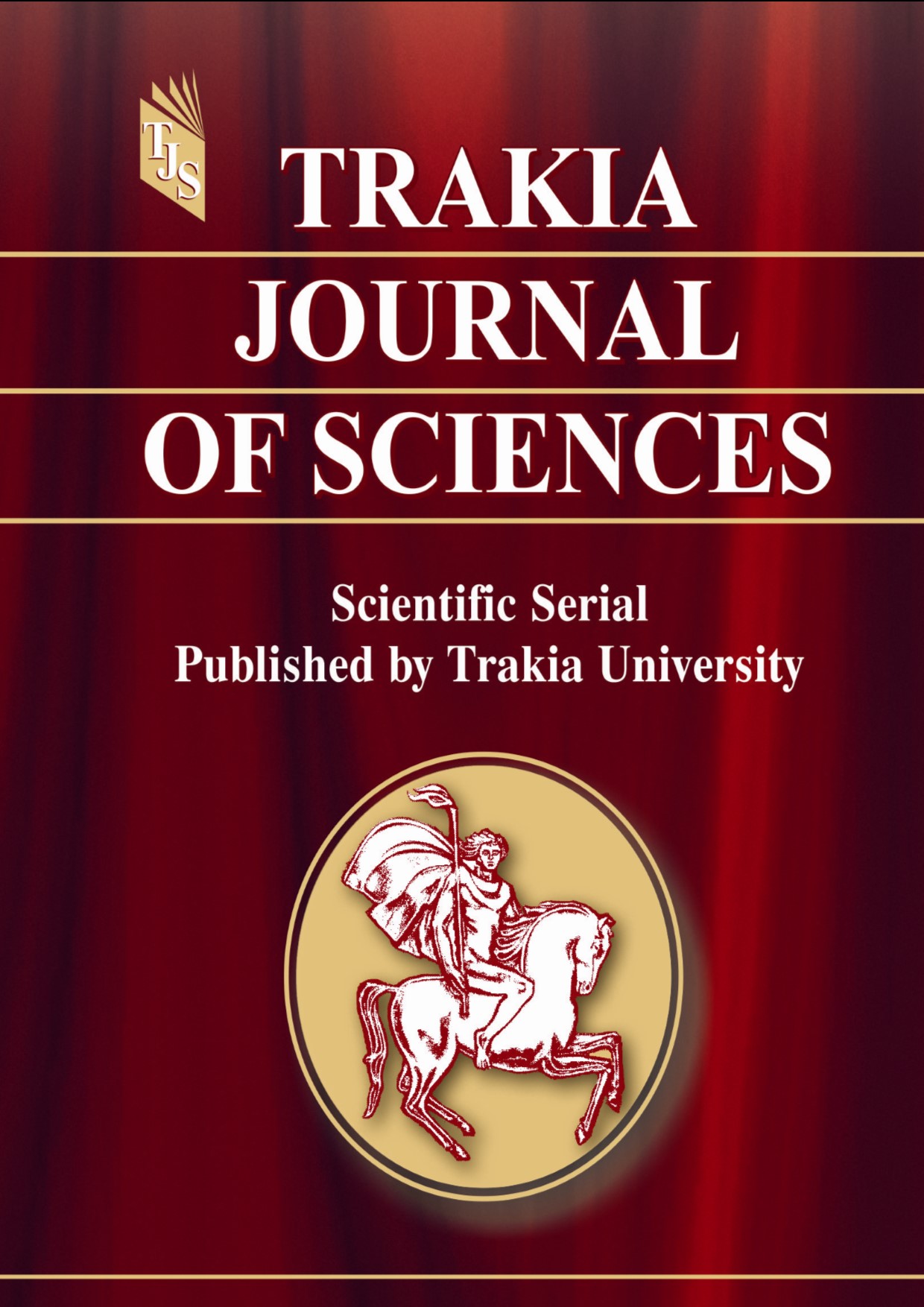PREVALENCE OF THE RESPIRATORY SYNCYTIAL VIRUS INFECTION IN THE WINTER AND SPRING MONTHS AMONG BULGARIAN CHILDREN YOUNGER THAN 2 YEARS OF AGE
DOI:
https://doi.org/10.15547/tjs.2024.3.44Keywords:
viral lower respiratory tract infections, RSV, co-infections, age 2 months to 5 yearsAbstract
Lower respiratory tract infections (LRTIs) in children from 2 months to 5 years of age are significant for clinical practice and researchers because of their high incidence, risk of severe clinical course, and development of chronic complications. About 60% of LRTIs are caused by viral infections. PURPOSE: To make an etiological diagnosis of viral infections of the lower respiratory tract-acute bronchiolitis and viral pneumonia. To present an epidemiological characterization in relation to the identified viral agents. METODS: The subjects of the prospective study were 101 children aged 2 months to 5 years, hospitalized in the Clinic of Pediatrics with clinical manifestations of viral LRTI`s with bronchial obstruction. Clinical material was analyzed according to the main epidemiological parameters: sex, age, place of residence, season, etiological agent of infection, etiological diagnosis according to season, presence of risk factors from family history and comorbidities. Etiological diagnosis of viral LRTIs was made by RT-PCR analysis. RESULTS: Epidemiological characteristics of the diagnosed viral LRTIs are presented. The prevalence of male sex was found to be higher (without statistical significance), more frequent among urban children and the highest incidence of viral LRTIs in the age up to 2 years. The etiological diagnosis made shows that respiratory syncytial virus (RSV) is the most common etiological cause of acute bronchiolitis in children under 2 years of age, both alone and in co-infections. CONCLUSIONS: RSV is the most common statistically significant etiological cause in winter and spring. Rhinovirus (RV) is the leading etiological cause in summer and autumn. Co-infections involving RSV and RV also have a high incidence during these seasons.
References
Levels & Trends in Child Mortality: Report 2020. Estimates developed by the United Nations Inter-agency Group for Child Mortality Estimation. New York: United Nations Children's Fund; 2020.
World Health Statistics 2019. Monitoring health for the SDGs, sustainable development goals. Geneva: World Health Organization; 2019.
Nair H. et al. Global burden of acute lower respiratory infections due to respiratory syncytial virus in young children: a systematic review and meta-analysis. Lancet. 2010 May 1;375(9725):1545-55.
Ali A,et al. Role of human metapneumovirus, influenza A virus and respiratory syncytial virus in causing WHO-defined severe pneumonia in children in a developing country. PLoS One. 2013 Sep 18;8(9):e74756.
Ralston, S.L.et al. Clinical Practice Guideline: The Diagnosis, Management, and Prevention of Bronchiolitis. Pediatrics 2014, 134, e1474–e1502.
Hasegawa, K.; Tsugawa, Y.; Brown, D.F.; Mansbach, J.M.; Camargo, C.A. Trends in Bronchiolitis Hospitalizations in the United States, 2000–2009. Pediatrics 2013, 132, 28–36.
Borchers AT, et al. Respiratory syncytial virus–a comprehensive review. Clin Rev Allergy Immunol. 2013;45(3):331–79.
Ting Shi et al. Global, regional, and national disease burden estimates of acute lower respiratory infections due to respiratory syncytial virus in young children in 2015: a systematic review and modelling study. Lancet, 2017 Sep 2;390(10098):946-958.
Xavier Carbonell-Estrany et al Long-Term Burden and Respiratory Effects of Respiratory Syncytial Virus Hospitalization in Preterm Infants—The SPRING Study PLoSONE. (2015)
Brigitte Fauroux et al.The Burden and Long-term Respiratory Morbidity Associated with Respiratory Syncytial Virus Infection in Early Childhood. Infect Dis Ther.2017 Jun;6(2):173-197.
Papenburg J, BoivinG. The distinguishing features of humanmetapneumovirus and respiratorysyncytial virus. Rev Med Virol,2010, 20:245–260.
R Chanock, L Finberg Recovery from infants with respiratory illness of a virus related to chimpanzee coryza agent (CCA). II. Epidemiologic aspects of infection in infants and young children.,1957 Nov;66(3):291-300.
Collins PL, Melero JA. Progress in understanding and controlling respiratory syncytial virus: still crazy after all these years. VirusRes. 2011;162(1–2):80–99.
McLellan JS, Ray WC, Peeples ME. Structure and function of respiratory syncytial virus surface glycoproteins. Curr Top Microbiol Immunol. 2013;372:83–104.
Zhivaki D et al. Respiratory syncytial virus infects regulatory B cells in human neonates via chemokine receptor CX3CR1 and promotes lung disease severity. Immunity. 2017 02 21; 46(2):301-314
Jartti, T.et al. Bronchiolitis. Pediatr. Infect. Dis. J. 2009, 28, 311–317.
Carlotta Biagi et al. Rhinovirus Infection in Children with Acute Bronchiolitis and Its Impact on Recurrent Wheezing and Asthma Development.MDP; Published: 21 October 2020
Walker CLF, RudanI, LiuL, et al. Global burden of childhood pneumonia and diarrhoea.The Lancet, 2013, 381(9875): 1405 -1416
Hall CB. Respiratory syncytial virus and parainfluenza virus. N Engl J Med, 2001, 344(25).
Kodani, M.et al. „Application of TaqMan Low-Density Arrays for Simultaneous Detection of Multiple Respiratory Pathogens“, J Clin Microbiol., 49:2175-82,2011
Dare RK. et al. Human Coronavirus Infections in Rural Thailand: A Comprehensive Study Using Real-Time ReverseTranscription Polymerase Chain Reaction Assays HCoV Infections in Thailand • JID 2007:196.
Zlateva KT, et al. Subgroup prevalence and genotype circulation patterns of human respiratory syncytial virus in Belgium during ten successive epidemic seasons. J Clin Microbiol. 2007;45(9):3022-30.
Korsun N, et al. Predominance of ON1 and BA9 Genotypes of Respiratory Syncytial Virus (RSV) in Bulgaria, 2016-2018. J Med Virol. 2020
Korsun N, et al. Viral pathogens associated with acute lower respiratory tract infections in children younger than 5 years of age in Bulgaria. Braz J Microbiol, 2019 Jan;50(1):117-125.
Xiao-Bo Zhang et al. Clinical characteristics and risk factors of severe respiratory syncytial virus-associated acute lower respiratory tract infections in hospitalized infants. World J Pediatr, 2014 Nov;10(4):360-4.
Vandini, S.et al. Respiratory Syncytial Virus: The Influence of Serotype and Genotype Variability on Clinical Course of Infection. Int. J. Mol. Sci. 2017, 18, 1717.
Jartti, T. et al Bronchiolitis. Pediatr. Infect. Dis. J. 2009, 28, 311–317.
Bosis, S.et al. Role of respiratory pathogens in infants hospitalized for a first episode of
wheezing and their impact on recurrences. Clin. Microbiol. Infect. 2008, 14, 677–684.
Mohapat Shyam, Richard F Lockey Respiratory Syncytial Virus Infection: From Biology to Therapy A Perspective February 2008 World Allergy Organization Journal 1(2):21-8
Dvir Gatt et al. Prevention and Treatment Strategies for Respiratory Syncytial Virus (RSV) MDPI. 2023
Charl Verwey , Ziyaad Dangor , Shabir A Madhi Approaches to the Prevention and Treatment of Respiratory Syncytial Virus Infection in Children: Rationale and Progress to Date. Paediatr Drugs 2024 Mar;26(2):101-112.

Downloads
Published
Issue
Section
License
Copyright (c) 2024 Trakia University

This work is licensed under a Creative Commons Attribution-NonCommercial 4.0 International License.


